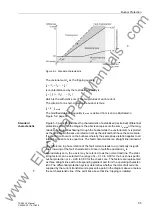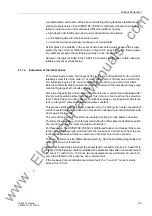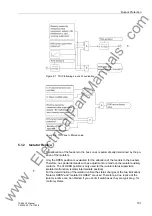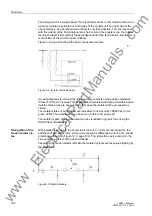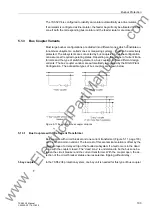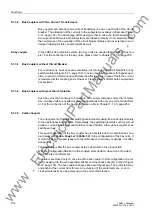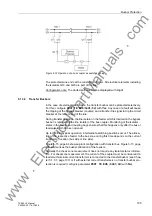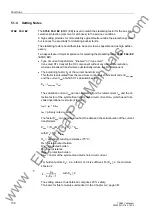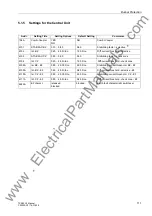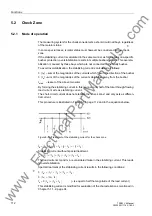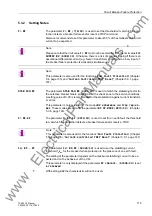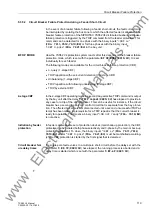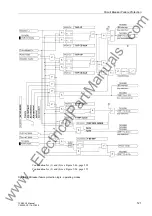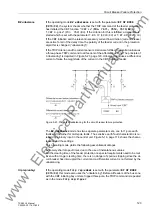
Functions
108
7SS52 V4 Manual
C53000-G1176-C182-3
5.1.4
The
6101/CU
) is used to match the stabilizing factor for the bus zone-
selective protection (common for all buses) to the service conditions.
A high setting provides for more stability against faults outside the protection system
but reduces the sensitivity for detecting busbar faults.
The stabilizing factor should therefore be set as low as possible and as high as nec-
essary.
Two aspects are of major importance for selecting the stabilizing factor
6101/CU
):
•
Type of current transformers: "lineared" or "iron-cored".
Iron-cored CTs transmit the DC component without any noticeable reduction,
whereas linearized transformers substantially reduce the DC component.
•
The burdening factor K
b
of the current transformers
This factor is calculated from the maximum continuous short-circuit current I
scc max
and the current I
sat
at which CT saturation begins:
K
b
=
I
scc max
/ I
sat
The saturation current I
sat
can be calculated from the rated current I
pn
and the ef-
fective factor of the symmetrical rated short-circuit current K'
ssc
(which used to be
called operational overcurrent factor n')
I
sat
= I
pn
* K'
ssc
I
pn
= primary rated current
The factor K'
ssc
can be calculated from the data and the actual burden of the current
transformers:
K'
ssc
= (R
ct
+R
b
) / (R
ct
+R'
b
) * K
ssc
with R'
b
= R
l
+ R
relay
R
ct
= secondary winding resistance (75 °C)
R
b
= resistive rated burden
R'
b
= connected burden
R
l
= line resistance
R
relay
= protection burden
K'
ssc
= factor of the symmetrical rated short-circuit current
For burden factors K
b
< 2, a k-factor of 0.6 is sufficient. For K
b
> 2, the minimum
k-factor is:
with K
b
> 2
The setting value k thus obtained comprises 20 % safety.
The basis for this fomula is summarized in the Chapter A.2, page 341.
k
K
b
4 K
b
1
–
-----------------------
>
www
. ElectricalPartManuals
. com


